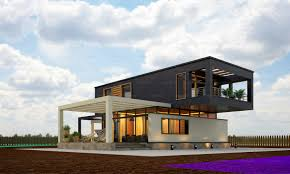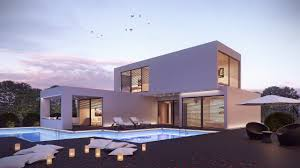Now Reading: Modular Homes: The Affordable Housing Solution Everyone’s Talking About 2025!
-
01
Modular Homes: The Affordable Housing Solution Everyone’s Talking About 2025!
Modular Homes: The Affordable Housing Solution Everyone’s Talking About 2025!

In recent years, the demand for affordable housing has grown rapidly worldwide. Many cities face a housing shortage, and prices keep rising, making it hard for people to find homes within their budgets. One promising solution gaining attention is modular homes—houses built using pre-made sections assembled on-site. But are modular homes really the future of affordable housing? Let’s explore what makes them unique and why they might be the key to solving the housing crisis.
What Are Modular Homes?

Modular homes are built in factories, where different parts of the house—called modules—are manufactured separately. These modules are then transported to the building site and put together like building blocks. Unlike traditional homes, which are built entirely on-site, modular homes are partially constructed indoors. This method allows for better quality control and faster construction.
Why Are Modular Homes More Affordable?

One of the main reasons modular homes are more affordable is because of how they are made. Factory production reduces waste and lowers labor costs. Building indoors also means work can continue regardless of weather conditions, which speeds up the process and saves money. Additionally, modular homes use materials efficiently and reduce errors, making them cheaper than many traditional houses.
Speedy Construction
Modular homes can be completed much faster than conventional homes. While a typical house might take months or even years to finish, modular homes can be ready in weeks. This fast turnaround is crucial in areas facing urgent housing shortages. Faster building means people can move into their homes sooner, and developers can supply more houses in less time.
Quality and Safety
Since modular homes are built in controlled factory settings, the construction quality is often higher. The modules undergo inspections at every stage to ensure they meet strict building codes and standards. Because the environment is protected from rain, wind, and other weather challenges, materials do not suffer damage during the build. This quality control means modular homes are often as durable as traditional houses.
Customization and Design Flexibility

Many people worry modular homes look all the same. However, today’s modular homes come in many styles, sizes, and designs. Homebuyers can choose from a variety of floor plans and finishes. Builders also allow customization options, so the homes can be tailored to individual tastes and needs. This flexibility makes modular homes attractive to a wide range of buyers.
Environmental Benefits
Modular homes are often more eco-friendly than traditional construction. Factory building produces less waste because materials are cut precisely and reused efficiently. The quicker build time also means less energy is used on-site. Additionally, many modular homes incorporate energy-efficient designs and materials, which can reduce utility bills for homeowners over time.
Challenges to Overcome
Despite many benefits, modular homes face some challenges. One major obstacle is the public’s perception. Some people still think modular homes are low quality or “cheap.” Changing these views requires education and time. Also, zoning laws and building codes in some areas can restrict modular home construction, making it harder for developers to build them.
Transportation of modules can be expensive, especially in remote locations or areas with difficult access. This adds to the cost and sometimes limits where modular homes can be built. Financing and insurance for modular homes can also be tricky because some lenders and insurers are unfamiliar with this type of construction.
Success Stories and Growing Interest
Several cities and organizations are already turning to modular homes to address housing needs. For example, in places like California and New York, modular homes are being used to create affordable housing units quickly and efficiently. Nonprofit groups are also building modular homes to provide shelter for homeless families.
Governments and private companies are investing more in modular construction technologies, hoping to scale production and reduce costs further. As the industry grows, more people are discovering the benefits of modular homes, and acceptance is increasing.
The Future Outlook
The future of affordable housing may well depend on innovative solutions like modular homes. With rising land costs and labor shortages in the construction industry, traditional building methods alone might not meet growing demand. Modular homes offer a practical, cost-effective, and fast alternative.
Advances in technology, such as 3D printing and automated manufacturing, could make modular homes even cheaper and more customizable. If policies support modular construction and public awareness improves, modular homes could play a major role in solving the affordable housing crisis worldwide.
Conclusion
Modular homes are gaining momentum as a smart solution to the affordable housing challenge. Their affordability, quick construction, and quality make them attractive options for people struggling to find affordable places to live. While some hurdles remain, the increasing interest from governments, developers, and buyers shows that modular homes are not just a passing trend. They could be a key part of the future of affordable housing.
For anyone interested in housing innovation or seeking affordable options, modular homes deserve a close look. The future of homebuilding might just be modular.
Read More:- Shobha Realty Launches Its Most Luxurious Project Yet—Full Details Inside 2025



















